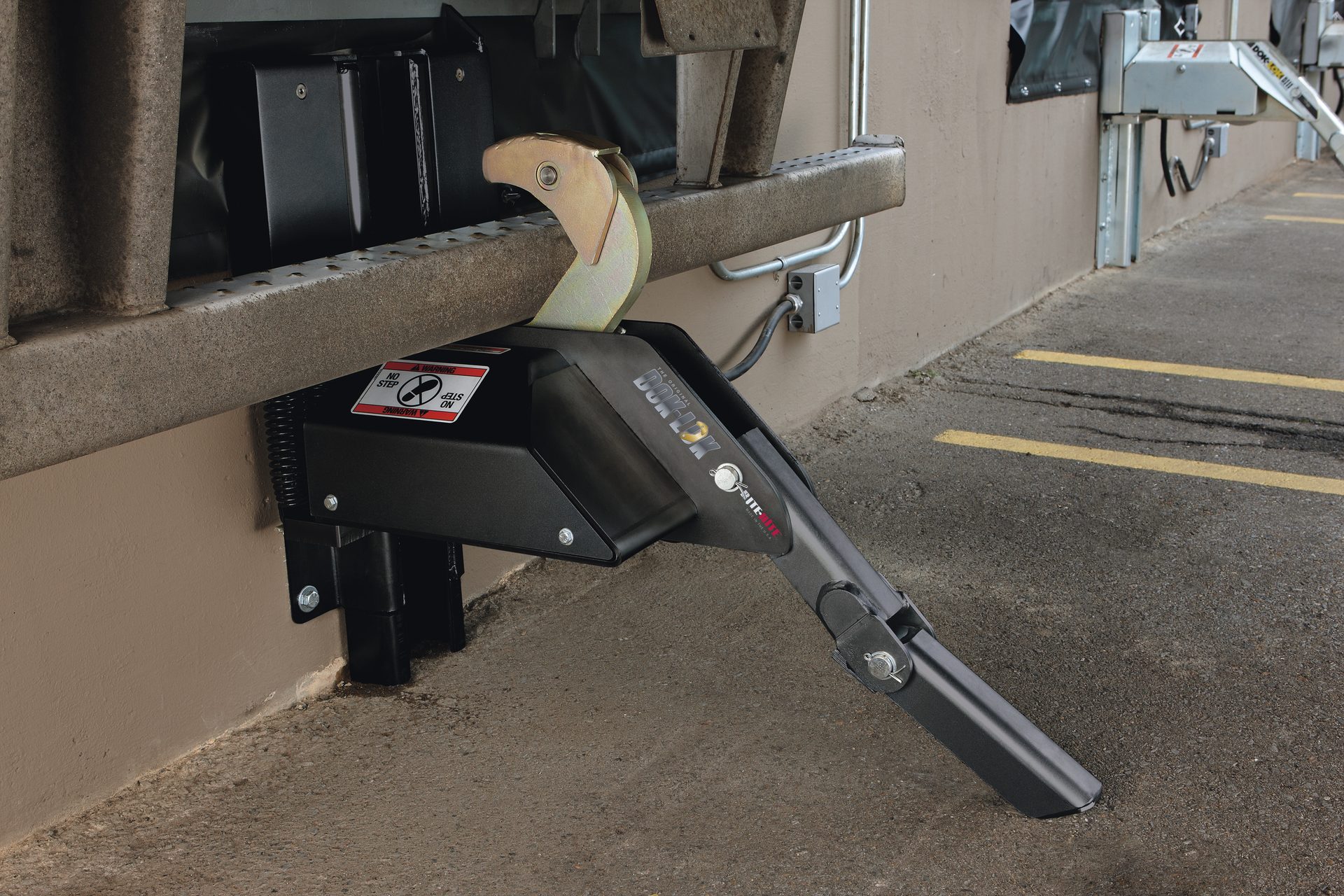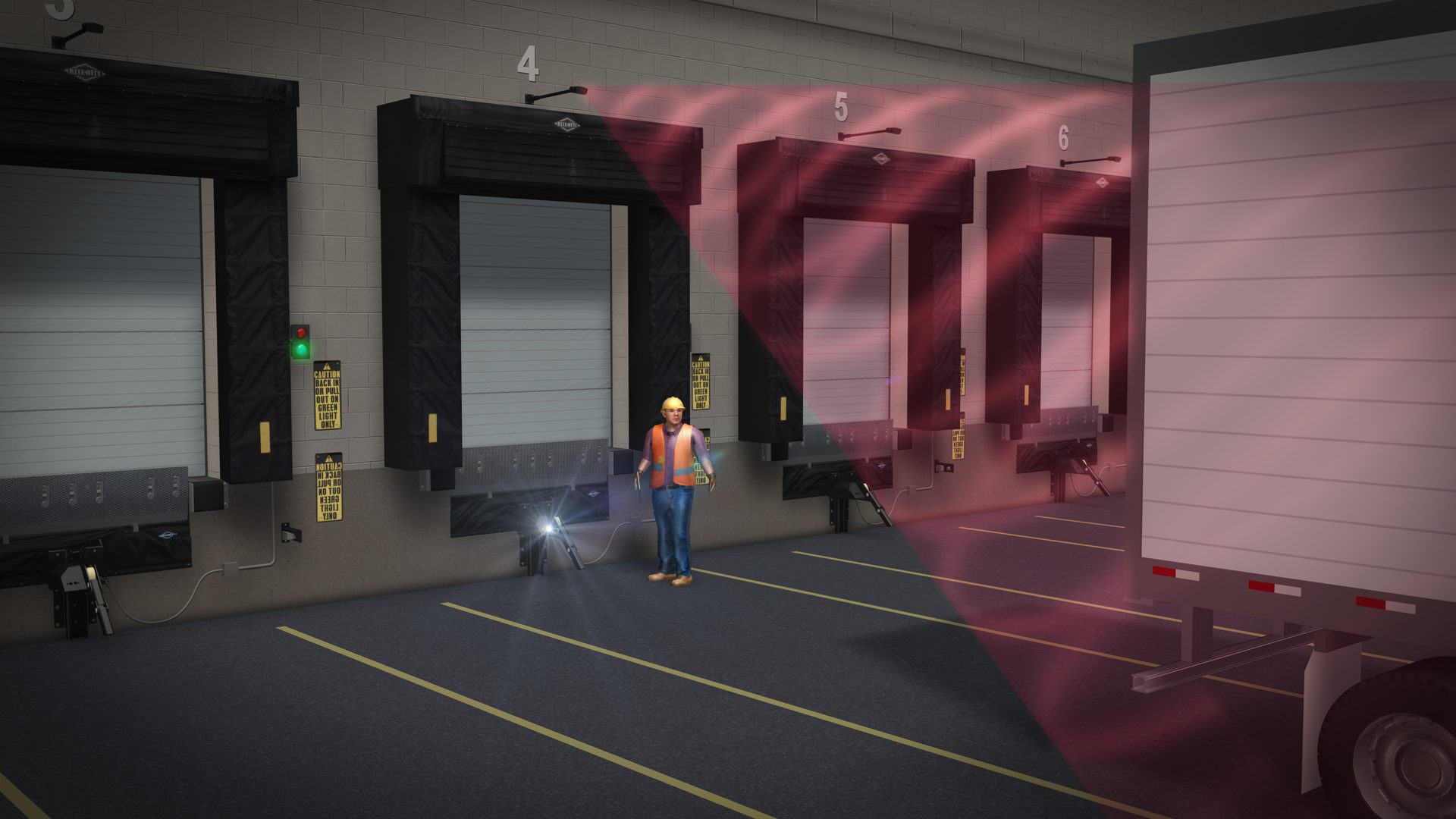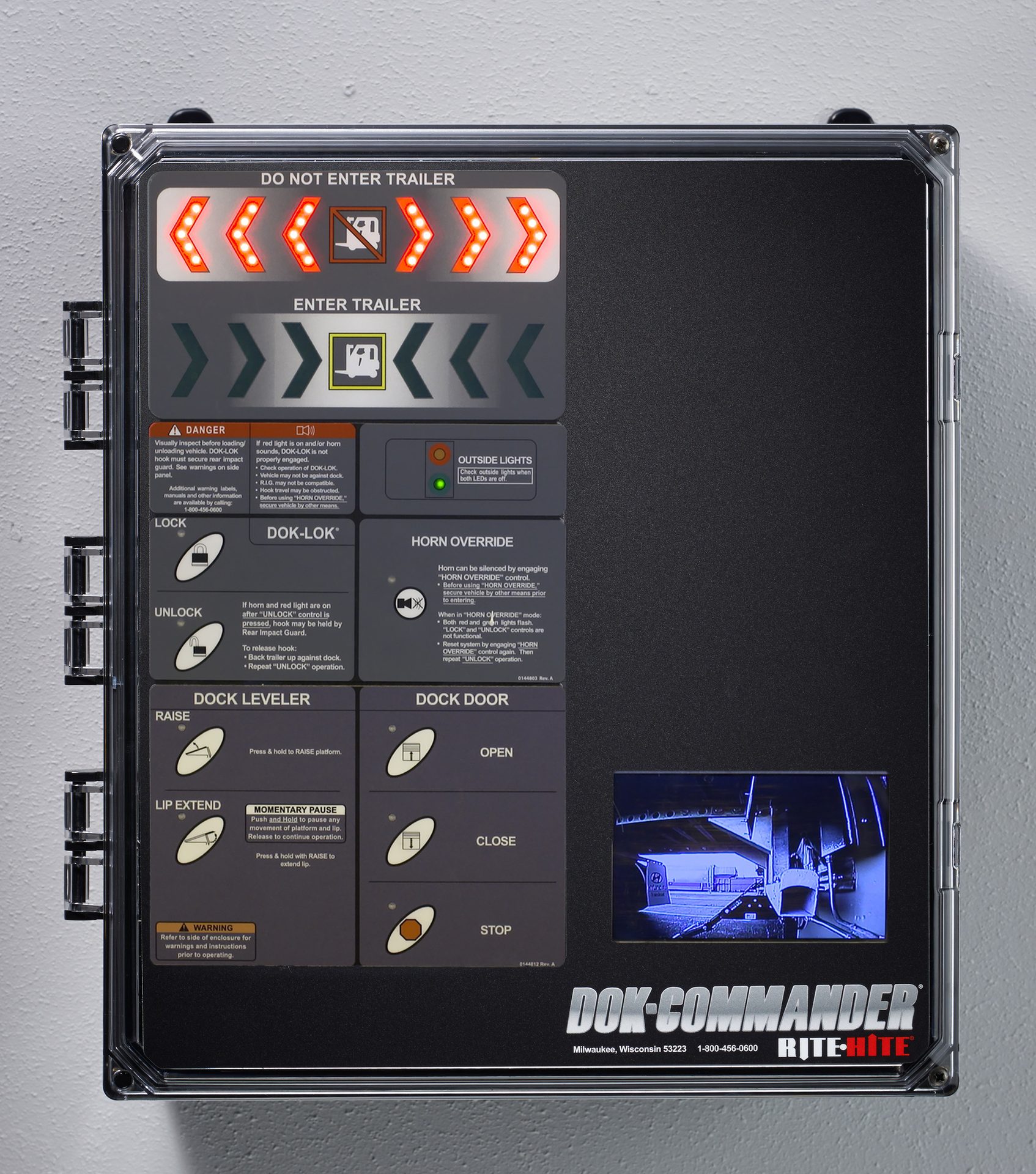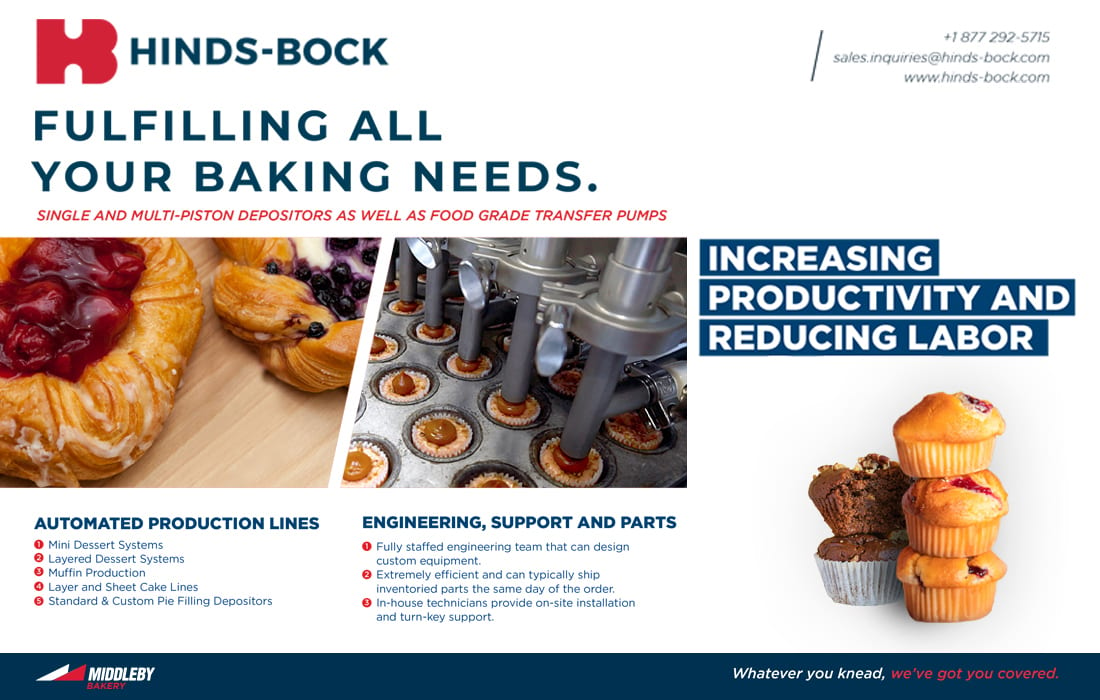Four women with over six decades in the industry on how they got started and their advice women wanting to grow their careers.
By Kelley Rodriguez
Trends in Cold Storage Equipment and Technology
As the refrigerated and frozen food industry continues its rapid growth, managers of cold storage facilities are increasingly looking for ways to keep pace without sacrificing safety or efficiency. Unfortunately, more shipments coming and going means more openings of freezer, cooler and loading dock doors, resulting in more opportunities for expensive conditioned air to escape and and/or for products to degrade. The increased pace and level of activity also means more potential accidents involving workers, automated guided vehicles (AGVs) and equipment. Fortunately, several new technology, equipment and design advances have taken place recently that can help facilities mitigate these challenges.

The SHR-5000 Dok-Lok is an automated vehicle restraint that can handle intermodal cargo containers and other obstructed-RIG trailers for interlocking into a smart dock control system. Image courtesy of Rite-Hite.
Loading Docks: Drive-Through Design
One of the most significant changes has been the increased implementation of “drive-through” loading dock configurations. Drive-through docks differ from traditional loading docks because they are designed for trailer doors to be opened into the facility, rather than on the drive approach, minimizing cargo theft opportunities and eliminating the opportunity for outside elements to degrade the cargo. From both an energy and operations standpoint, drive-through docks are the industry benchmark for cold chain integrity. They effectively make the semi-trailer a true extension of a facility, as outside air is prevented from infiltrating the operations inside – not to mention wind, rain, dust, bugs, and other contaminants.
A drive-through loading dock requires a system of equipment that works together, including a vertical storing leveler, recessed pit and an automatic vehicle restraint interlocked into a smart control system, as well as a dock shelter compatible with vertical levelers. While the benefits of vertical levelers begin with their ability to allow trailer doors to open inward, they do not stop there. Since vertical levelers allow the dock door to close directly onto the pit floor, instead of the leveler, they allow the dock station to have a tighter environmental seal when not in use. Additionally, the vertical design makes them easier to clean (when in the upright stored position), as well as easier to wash the surrounding pit floor.
Automatic vehicle restraints are another key component in a drive-through dock. They automatically engage a trailer’s rear-impact guard (RIG) or rear wheels to secure the trailer to the loading dock when it backs into position. This is a safety—and productivity—enhancement as it keeps workers from having to go outside onto the dangerous drive approach to secure the trailer. Additionally, the leading restraints and levelers can be interlocked with dock doors and barriers into a smart control system and are only to be activated in a safe sequence of operation. The most advanced restraints will re-fire if an engaged trailer attempts to pull away when still in the locked position or if tampering is detected. In the event of tampering, their integrated control system can also alert the building’s security systems.
Other Elements of Advanced Dock Control Systems
State-of-the-art dock control systems also incorporate multiple cameras that provide workers inside with a real-time view of the restraint engagement and trailer nose stand outside, as well as audio/visual safety systems that warn workers of potential dangers inside and out.
On the dock interior, motion-sensing technology will trigger a bright blue light onto the dock leveler when it detects movement inside the trailer, alerting workers that a forklift or AGV could exit the trailer at any moment. This tool can also warn a dockworker or forklift if they are entering an unsecured trailer. In such cases, an alarm goes off and a blue light will start flashing inside the trailer. Simultaneously, the safety lights on the building exterior turn red, letting the truck driver know it is not safe to pull away.
To protect workers outside on the drive approach, a similar sensor can detect the motion of a backing tractor-trailer and emit a visual and audio alarm to warn of the impending danger. This multisensory alert system is particularly important because ambient noise often masks the sound of a truck’s engine, which can be 70 feet or more from the back of the trailer.

The motion-sensor based Approach-Vu emits audio and visual warnings when it detects a semi-trailer backing into a dock position.
Image courtesy of Rite-Hite.
Plant Interior: Cooler and Freezer Doors
Similar advances in safety, productivity and energy efficiency can be found in plant interiors, around coolers and freezers. High-speed, high-tech cooler and freezer doors are examples of infrastructure upgrades that can pay immediate and demonstrable dividends for facilities.
In recent years, a fundamental shift in thinking has taken place, with equipment manufacturers and end users realizing that the open-and-close (cycle) time and seal tightness of cold storage doors are more critical to energy efficiency than R-value.
While traditional cooler and freezer doors have high R-values, their slow cycle times allow for increased air infiltration and energy loss. High-speed doors, on the other hand, allow people and equipment to move more quickly through door openings, reducing the time for warm air to enter the cooler. The most technically advanced high-speed, roll-up doors can operate at up to 100 inches per second. Some high-speed doors are built to automatically snap back onto their tracks after forklift impact, which reduces the energy loss and downtime associated with fixing a broken or dislodged traditional cooler door.
The newest generation of high-speed cooler and freezer doors fuse both approaches, combining high speed operation with increased R-values and enhanced sealing. For example, the latest cold storage roll-up doors incorporate a 1-inch thick, R-4 fabric with a heated perimeter sealing design for stronger temperature separation. This advanced technology not only minimizes the intrusion of warm air, but also reduces related frost build-up and the need to address it with heat lamps. Similar advances have been made in bi-parting doors. The leading models incorporate heated perimeter sealing and 3-inch thick, R-10 rated panels with cycle times of up to 80 inches per second. As an added safety benefit, the panels on these doors automatically reverse when they encounter an obstruction.
These “new generation” doors offer other safety and smart features, such as a graphic user interface (GUI) door control panel. These unique 7-inch LCD touchscreen interfaces display real-time door status and, by eliminating arc flash, allow workers to troubleshoot settings without personal protective equipment. Other new generation door safety features include an LED display that counts down the time before a door closes, as well as an arrow to signal when it is about to open and about to close. Additionally, leading cooler/freezer door models have motion sensors that indicate to approaching forklifts when there is a potentially seen presence on the other side of the door – such as a worker or AGV.
Smart Controls Collect Data Across the Plant
These graphic user interface door controls and the interlocked dock controls described earlier are both smart systems that collect and disseminate usage data. For example, the door control panel provides instant usage data—like number of cycles and average cycle time—and will send alerts if a door has been left open or is ajar. This door control system can be integrated with many building management systems to provide further operational efficiencies for refrigerated and frozen food facilities.
On the loading dock, integrated control systems not only ensure that equipment can only be operated in a safe sequence, but they also collect statistics like the number of openings and closings, when the trailer restraint was engaged and disengaged, and the length of time the dock door was open. Some even include a dock timer feature that visually displays a trailer’s time at the dock, alerting workers to potential detention and demurrage charges. The timer allows facilities to customize their shipping window for each dock position, helping to accommodate various trailer types and load size needs. Its control interface indicates crucial loading time milestones, like when the shipping window is within 30 minutes, when the shipping window has been exceeded, or and when a load is complete.
Like the GUI door controls, smart loading dock controls can also send safety/efficiency alerts – such as notifying management when a dock door is open without a trailer present. Leading-edge loading dock controls are also like GUI door controls in that they can be integrated with building management and IoT systems, as well as loading dock/logistics management software.

The Dok-Commander is a smart loading dock control system.
Image courtesy of Rite-Hite.
Dock Management Software Streamlines Operations
The development of dock management and communications software has marked another quantum leap forward for refrigerated and frozen food facilities. Featuring automated, visual dashboards, the newest dock management software systems allow plant managers to get a real-time view and status check on all trailer locations and activity across their loading docks. This browser-based software virtually eliminates the need for paper logbooks or two-way radio processes. By combining dock and yard management communication activities, the system provides full visibility of all processes at the loading dock, helping to minimize detention charges and ensure that cold storage food shipments aren’t compromised at the dock.
Carrier communications also are improved by the new software, as its SMS messaging function allows direct communication with drivers. This capability greatly reduces driver check-in time, streamlines the assignment process, and improves overall trailer throughput. Contactless protocols are also enhanced, as the electronic check-in eliminates the need for drivers to leave their truck cab or plant personnel to leave the dock or shipping office.
New Equipment, Technology are Keys to Keeping Pace
Although the refrigerated and frozen food category continues to expand at a record pace, a host of new technology and design concepts have come online recently to help facilities keep pace with demand. From drive-through loading docks and interlocked dock controls to high-speed door systems, companies nationwide are upgrading the equipment in their facilities with an eye toward enhanced speed, safety and environmental separation. Simultaneously, many are also implementing smart-enabled equipment and sophisticated logistics management software to protect workers and products, streamline operations and, ultimately, improve their bottom line.

